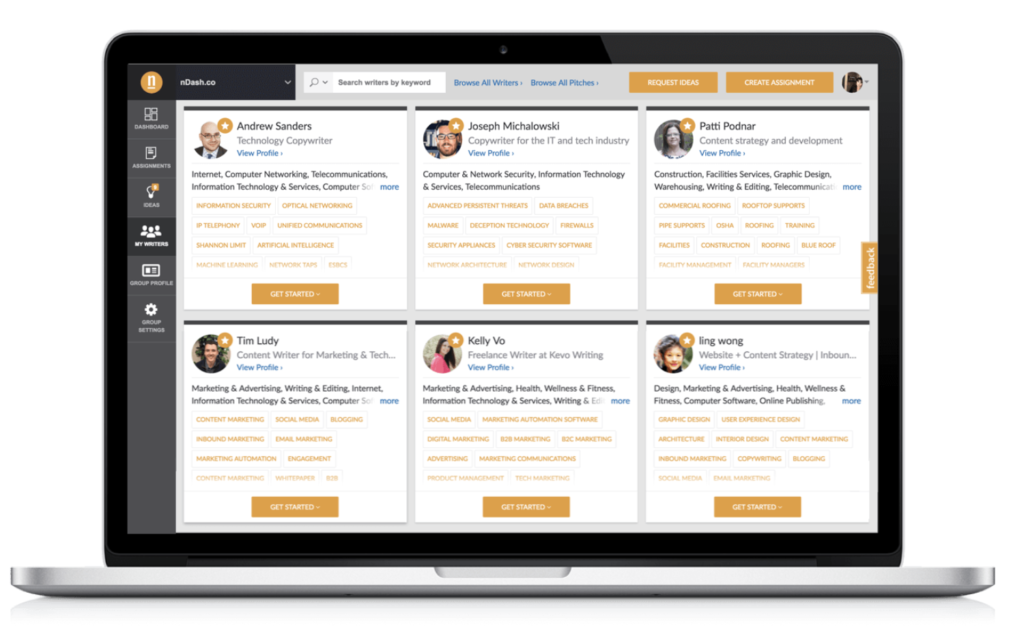Over 57 million Americans (a third of the U.S. workforce) work freelance.

Drill down to the millennial subset and you’re looking at a number that’s closer to 50 percent. So there’s no doubt the state of employment is changing altogether.
And, you’ve likely seen the evidence yourself or read the latest thinkpiece covering the current gig economy crisis. Where we can talk about baby boomer Uber drivers or Airbnb and the housing crisis, we’re looking at those websites that undermine legitimate freelance professions like writers, designers, and developers.
Sites like Upwork and Freelancer promise an easy path to entry into paid work—along with the natural allure of being your own boss and working anytime, anywhere.
While these job aggregate sites that “find the clients for you” seem like a great way to save time, they can be a trap. The premise of Fiverr, is, after all, $5 logos, blogs, and the like.
Bidding for work and giving away a percentage of your rate is rarely the best way to jumpstart your career. Here’s why.
The problem with gig economy sites
Bidding for jobs sucks
Freelance bidding sites operate under this guide of creating a free market, but the result is multiple bidders undermining one another until the client accepts the lowest bid.
And while these sites come with an interface and the convenience of an aggregated pool of potential opportunities, freelancers lose out. Those just starting their career take jobs that pay next to nothing–just to edge out the competition.
The bidding site generally sides with the customer when issues come up—leaving freelancers unprotected.

Middleman takes the relationship out of the equation
While it might seem nice to take a break from the business development side of freelancing, it comes at a cost. The best freelancing arrangements come in the form of regular clients with a more formal relationship.
With bidding sites and content mills, a middleman takes a cut and handles client relations. And without that direct connection, you lack the lines of communication that allow you to get to know a client—and understand their business challenges and goals.
When you give this part up, you not only lose that cut of the project you’d normally pocket, you also lose control and the chance to develop a long-term relationship.

8 best sources for remote work opportunities
Read Now ►Issues for customers, too
Higher-end customers want to find a partner they can trust, someone who can help them reach their goals, be it improving the user experience on their website or writing high-end content.
Bidding sites don’t necessarily give you the connection needed to create a partnership that works. Simply mention the word “call” or “email” in the Upwork messaging hub, and a window will pop up, stating that protections do not apply if you communicate outside the platform.
And we’ve found that removing a direct line can muddy communications.
The only real advantage for customers is that bidding sites provide some insurance in case the freelancer provides substandard service.

These are the highest-paying online careers
Read Now ►What about those elite freelancing sites?
Unlike the Fiverrs and the Upworks of the world, there’s a new crop of sites that aim to separate the riff-raff from the serious talent.
There’s Reedsy, a platform that links book writers and editors, as well as illustrators and publicists. Or, Toptal, a platform that lets only the top three percent of freelancers from all sectors enter their exclusive pool.
The benefit with Toptal is, you’ll gain access to a community of well-known brands sure to boost your portfolio—and your paychecks.

And then there’s nDash, a content community platform (their words) that helps companies find freelance writers. Writers pick their own rates and according to the site, the average assignment pays about $175.
nDash doesn’t necessarily impose standards like Toptal, but the experience is more focused on highlighting skills and quality, rather than brokering cheap labor.
The platform allows you to pitch companies through the portal or apply for a specific assignment. Still, there aren’t that many companies using the platform; it’s only been around for a couple of years.
Still, we’re not totally sold on the concept of the digital intermediary. At the high end of the spectrum, you’re able to access opportunities you might not be able to on your own. That said, if you’re in that top three percent, do you really need someone to coordinate your next big client?
Leveling up
So, if these sites kinda suck, what’s the best way for freelancers to move up in this digital world?
Here’s the thing, if you have some experience under your belt, you should be able to get work through cold emailing, applying for jobs through online boards, and referrals. Which is why those niche-y middleman sites don’t fully make sense to us.
Now, reaching out directly doesn’t necessarily mean you’ll magically find the perfect gig, but it does mean you’ll save yourself the time trying to filter out the good stuff from the noise you’ll find on Fiverr, Upwork and the rest.
If you really are brand new, offer to help friends and family with a free or discounted product in exchange for a positive review.
Use those projects to build a portfolio and make sure you market yourself.
- Research—Look for companies that fall within your niche
- Pitch—Direct emails to a specific
- Build relationships
- Apply for freelance work directly with a company
In the end, we do understand the appeal of some of these sites.
As such, using them sparingly isn’t necessarily a bad idea. The problem is spending two hours on a $10 article or designing a company’s logo for $5. If you’re getting your bearings in a new niche or see an opportunity with fair rates, by all means, go for it.
But the best relationships tend to come from doing the legwork that allows you more choice of opportunities. Pitching your ideas to outlets, as well as seeking out direct contracts, on a daily basis, regardless of workload, will open up a wealth of options.
…if you’re willing to do the work.

